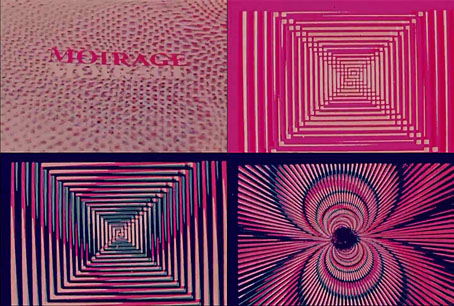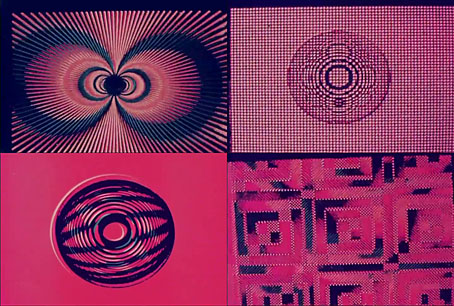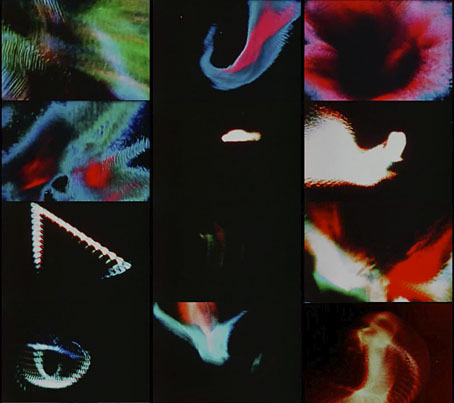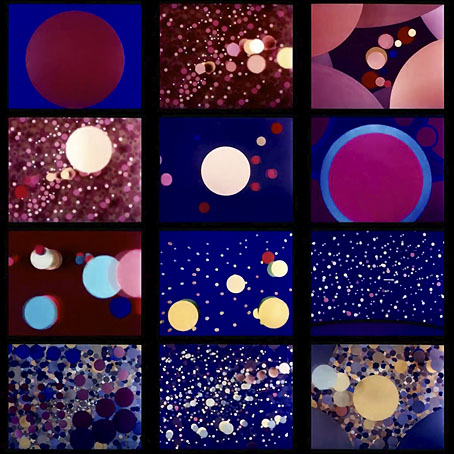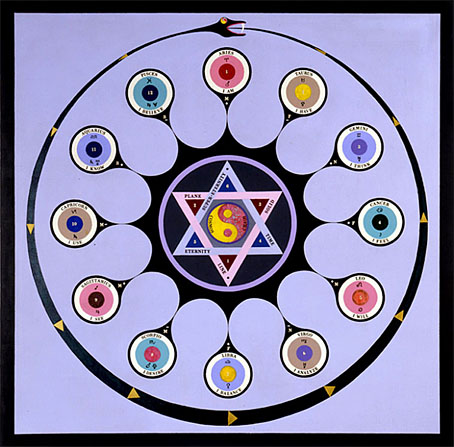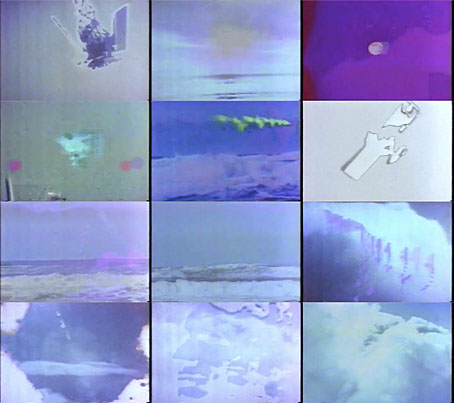Further proof that if you wait long enough (almost) everything turns up eventually. In 2011 I mentioned a fruitless search for Moirage (1970), a short film by Stan VanDerBeek, and here it is, in a rather scratched print at the Internet Archive. The film proves to be as I expected, an abstract work that animates the kinds of patterns that would have been deemed Op Art in the few years before LSD use became widespread, but which were unavoidably psychedelic by the time VanDerBeek came to make his film.
The patterns were provided by Gerald Oster, a biophysicist who used his discoveries in photochemical research to create works of art. My Studio Vista guide to Op Art lists two Oster studies in its bibliography: a book, The Science of Moiré Patterns (1959), which included sheets of overlays for the reader to play with; and an article co-written with Yasunori Nishijima, Moiré Patterns, for Scientific American (May, 1963). (The magazine also had a moiré pattern as its cover illustration.) I was playing with moiré interference myself a few weeks ago so this discovery is a timely one. My experiments involved vector graphics, a much more versatile medium for creating these effects than the printed sheets that Oster and his colleagues had to create. I’d been thinking of using the patterns as part of a book design but haven’t decided yet whether they’re suitable.
Elsewhere on { feuilleton }
• The abstract cinema archive

